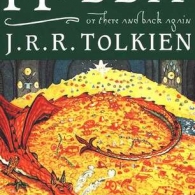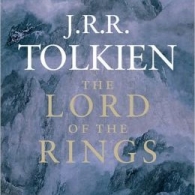J. R. R. Tolkien - the “father of big fantasy”
J. R. R. Tolkien is an iconic figure in world of literature and culture in general. He is an outstanding English writer, linguist, classic of world literature of the twentieth century and founder of the literary genre of fantasy. Actually, the fantasy was written down to Tolkien, but he was the one, who raised the works of this genre from the low-lying tabloid reading to the level of serious literature.
J. R. R. Tolkien is the author of the classic high fantasy works about Middle-earth: "The Lord of the Rings", "The Hobbit " and "The Silmarillion". He created more than just fascinating books. He gave humanity a whole world. Someone learns it, others rest in it, and someone simply believes in it. Tolkien became an innovator in creating fairy tales for adults.
LIFE AND BIOGRAPHY
J. R. R. Tolkien was born on January 3, 1892, in Bloemfontein, South Africa to Arthur Tolkien and his wife, Mabel Suffield. After the death of Arthur Tolkien of rheumatic fever, Mabel moved with a 4-year-old John and his younger brother Hilary in a village called Sarehole, at Birmingham, England.
Mabel Tolkien died in 1904, and John with his brother were sent to live in a boarding school with a distant relative of the family and a Catholic priest in Birmington, who took care of them.
Tolkien received a good education at Exeter College in Oxford, where he specialized in studying Anglo-Saxon and Germanic languages and classical literature.
At the age of sixteen, Tolkien met his first and only love - Edith Mary Brett, she was three years older and lived in the neighbourhood. Despite the fact that John's guardian, Father Morgan, was against their relationship because she was a Protestant, on March 22, 1916, John Tolkien and Edith Brett got married in a Catholic church.
After graduating from the University in 1916, Tolkien was enlisted to the regiment of the Lancashire Rifle Regiment in the rank of junior lieutenant. He survived the bloody battle on the Somme, which brought a huge loss, and was released from military service due to illness.
His first civilian job after World War I was at the Oxford English Dictionary, where he worked mainly on the history and etymology of words of Germanic origin. In 1920, Tolkien began working as an English lecturer at the University of Leeds. For the first two years of work at a university, he published the Dictionary of the Middle English Language, and four years after teaching in 1924, he became the youngest professor of this university.
In autumn 1925, Tolkien was elected as a professor of the Old English language of Oxford University and family with their four children moved to Oxford.
In Oxford, Tolkien becomes a member of the “Inklings” literary club, where he began a friendship with Clive S. Lewis. In 1936, Tolkien made a public lecture “Beowulf: The Monsters and the Critics”, that had an undeniable influence on the entire tradition of the study of medieval epic literature.
In 1959, Tolkien retired but continued to work on his books. For an enormous contribution to the development of English philology and for the positive influence on the younger generation, the English royal court made for the sake of Tolkien the exception - the English Queen Elizabeth II proclaimed Tolkien as a Commander of the British Empire accepting the writer at the Buckingham Palace.
In 1971, Tolkien`s wife Edith died. John Ronald Ruel Tolkien died on September 2, 1973, from the effects of bleeding stomach ulcers. He was buried near his wife.
TOLKIEN'S LITERARY WORK
The first literary, actually, poetic attempts by J. R. R. Tolkien date from the beginning of the 1910s during his membership in the “Tea Club”, where other members in every way encouraged manifestations of individual creativity.
The literary fame for Tolkien brought the story “The Hobbit, or There and Back Again”, which was written in 1937. Succeeding on the persuasion of publishers to write a few more books about hobbits, Tolkien began work on the creation of the “Lord of the Rings”, where he implemented the principles of magic fairy tales. However, the work on the text went slowly and had been stretching for 17 years. “The Lord of the Rings” was finally completed in 1954. During the Second World War, the writer was engaged in reflections on the fate of humanity, the problems of the nature of evil, tyranny, and power.
John Tolkien used the basic folklore traditions of English fairy tales in describing the images of fairy tale space, time and fairy tale characters.
One of the main differences between the fairy tale characters of the writer and the folklore system of images is the lack of a clear division into good and evil heroes, which gives Tolkiens` books an “unrealistic realism”.


